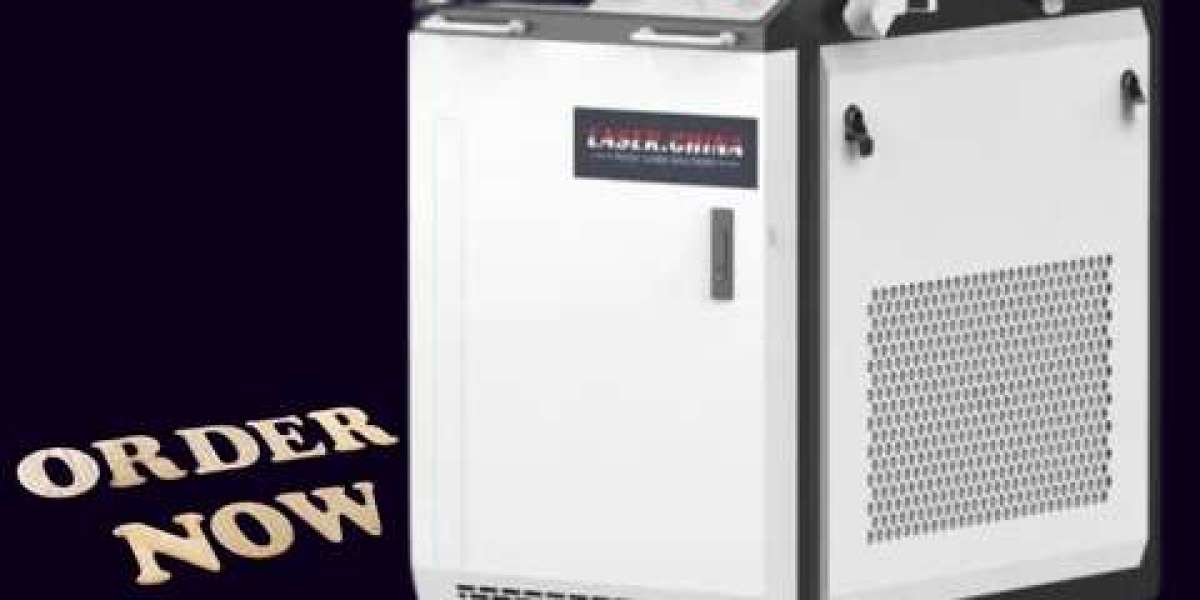This guide explores what makes a laser cleaning machine such a crucial tool in industries like aerospace, automotive, marine, manufacturing, and even art restoration. If you're dealing with rust, paint, oil, or oxidized metal layers, you’re not just cleaning grime—you’re protecting value, restoring efficiency, and preserving structural integrity.
Why the Concept of “Clean” Has Changed
For decades, the concept of cleaning in industrial environments has been based on harsh chemicals, solvents, or physical abrasion. While effective on the surface, these methods often damage the underlying material or create secondary waste. That’s a critical issue in sensitive sectors like electronics, aviation components, and historical restoration.
A laser cleaning machine offers a non-contact, precise way to remove contaminants without harming the substrate. It works through laser ablation—where focused laser pulses vaporize the unwanted layer. What remains is a clean, unaltered base.
This isn’t futuristic—it’s real, practical, and already being used by companies that care about durability, safety, and efficiency.
What Happens When You Don't Use Laser Cleaning?
Let’s look at what often occurs in industrial settings where traditional methods are still in use:
Rust spreads below the surface after improper manual cleaning.
Paint removal leaves scratches on aluminum or stainless steel surfaces.
Abrasive blasting causes erosion, especially on precision molds or dies.
Chemical residues remain, especially dangerous in food, pharma, or medical equipment.
In contrast, a laser cleaning machine can remove only the contaminant layer, with adjustable depth and no risk of damaging the base. That matters in real-world applications—whether you're removing years of oxidation from a turbine blade or cleaning mold tools without dismantling the system.
Who Uses Laser Cleaning Machines and Why
Industries have adopted laser cleaning machines for highly specific problems:
1. Aerospace and Defense
Aircraft components require tight tolerances. Even minor scratches from abrasive cleaning can impact safety or aerodynamic performance. Laser cleaning is used to prep surfaces before welding, bond inspection, or de-coating turbine parts.
2. Automotive
Laser cleaning has become a popular choice during engine block preparation, weld seam treatment, or brake disc rust removal. It allows real-time cleaning on production lines without stopping the workflow.
3. Energy & Infrastructure
From power plants to pipelines, cleaning surfaces during maintenance is critical. Traditional blasting may be restricted due to safety or environmental hazards. Laser systems reduce shutdown time and are safer to operate.
4. Cultural Heritage and Conservation
Museums and conservationists use compact laser cleaning machines to remove black crust from stone, corrosion from bronze statues, or soot from old paintings—without damaging the historical value.
5. Shipbuilding and Marine
Salt, barnacles, and corrosion are constant problems on marine structures. Lasers remove these layers on-site without producing secondary pollutants or requiring a dry dock.
How the Laser Cleaning Machine Works in Practice
To truly understand how powerful this system is, consider how it’s applied:
A handheld or robotic laser head is directed at the contaminated area.
The machine is calibrated for material type, depth, and layer condition.
Laser pulses hit the surface, instantly vaporizing the contaminant.
Fumes are extracted through a filtration system.
The process is localized, meaning there’s no damage to nearby materials.
Everything happens in seconds or minutes depending on the surface area—no mess, no waiting time for drying, and no risk of over-cleaning.
And here’s the part that surprises most new users: there’s minimal to zero consumable cost. No sand, no chemicals, no cleanup kits.
Safety and Precision Are Built-In
People often assume lasers are dangerous or complicated. But industrial-grade laser cleaning machines are built with sensors, shielding, emergency stops, and user-friendly interfaces. Operators receive basic training and can start working almost immediately.
Most units allow adjustments in:
Pulse duration
Energy per pulse
Beam width
Scanning speed
This custom control gives companies a tailored solution—whether cleaning delicate brass gears or thick steel frameworks.
Portable and Scalable to Need
From a compact 50W handheld system to a 1000W automated cleaning unit mounted on a robotic arm, laser cleaning machines are available in different formats. They fit various operations:
Field repair technicians use backpack-sized models for on-site service.
Manufacturing floors integrate laser cleaners into production lines.
Welding operations use pre-weld and post-weld laser treatments.
Contractor firms lease mobile units for maintenance or restoration work.
No matter the scale, the machine does one thing consistently—cleans only what needs to be removed and leaves everything else untouched.
Environmental and Operational Considerations
Laser cleaning generates no chemical waste. That’s a big deal for businesses following ISO 14001 or aiming to reduce their environmental footprint. There’s no media disposal, no solvent management, and no fumes if paired with proper extraction.
It also cuts down on labor—what took two workers six hours with abrasive blasting might take one operator 90 minutes with a laser cleaner.
And because there's no contact, there’s no risk of tool wear. That means longer machine lifespan and fewer maintenance cycles.
Misconceptions About Laser Cleaning
Some believe laser cleaning machines are only for high-tech labs or large corporations. The reality is the price point and scalability have changed dramatically in recent years.
Now, small workshops, repair businesses, and maintenance contractors can afford entry-level models. And when you factor in the cost of consumables, labor, and downtime saved, the investment pays off faster than most expect.
Another misconception is about material limitation. Users assume lasers only work on metal. In fact, many systems are designed to clean stone, rubber molds, plastics, or coated glass.
Final Thoughts
A laser cleaning machine isn’t just another tool—it’s a shift in how industries approach surface care, contamination control, and restoration. In places where accuracy, speed, and preservation matter, this technology is not a luxury—it’s a necessity.
Whether you’re removing paint, prepping for welding, or restoring something of historical value, a laser cleaning machine delivers unmatched precision and cleanliness without the environmental or material cost.
It’s not about whether you need one today—it’s about how much longer you can afford to operate without it.



